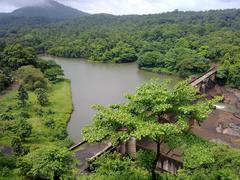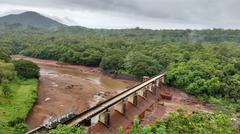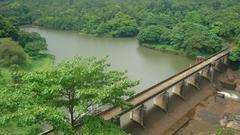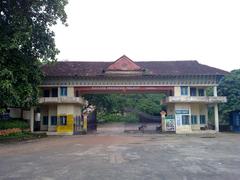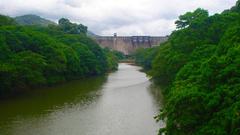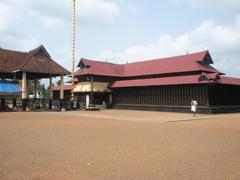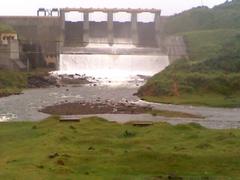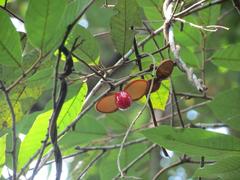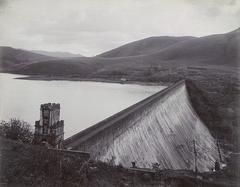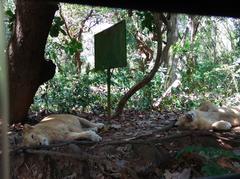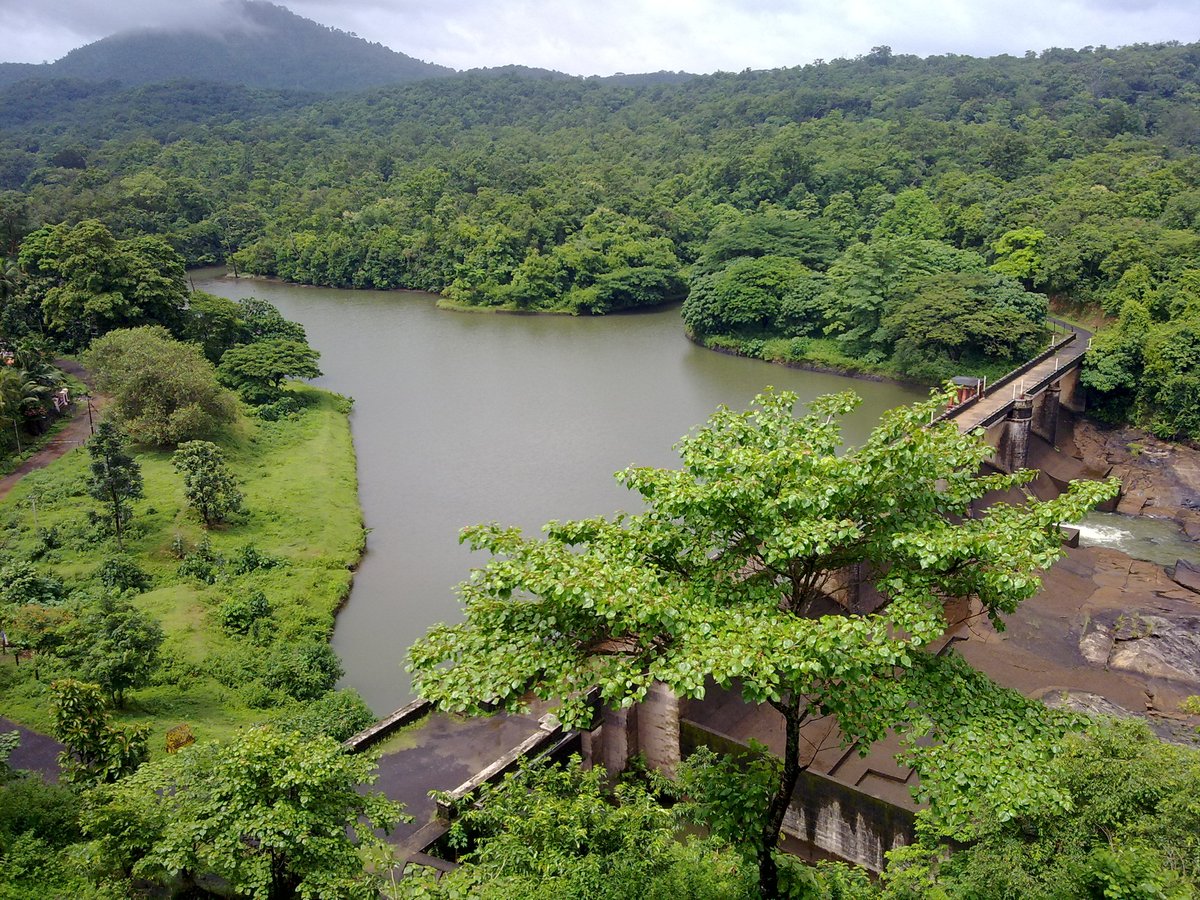
Thenmala Dam Visiting Hours, Tickets, and Guide to Kerala’s Historical Ecotourism Marvel
Date: 14/06/2025
Introduction
Located in Kerala’s picturesque Kollam district, Thenmala Dam—also known as Parappar Dam—embodies the confluence of engineering excellence, ecological stewardship, and vibrant local culture. Built across the Kallada River as part of the Kallada Irrigation and Tree Crop Development Project, Thenmala Dam has evolved from a critical irrigation and hydroelectric resource into India’s first planned eco-tourism destination. Adjacent to the Shendurney Wildlife Sanctuary in the Western Ghats, this site offers not only impressive infrastructure but also immersive nature, adventure, and cultural experiences. This comprehensive guide details Thenmala Dam’s historic significance, engineering features, visiting hours, ticketing, and the array of attractions that make it a must-visit for responsible travelers (Kerala Irrigation Department; TravelTriangle; Thenmala Ecotourism Organization).
Table of Contents
- Origins and Construction
- Engineering Features
- Irrigation and Power Generation
- Environmental and Socio-Cultural Impact
- Visiting Hours, Tickets, and Visitor Information
- Ecotourism Zones and Attractions
- Travel Tips and Accessibility
- Frequently Asked Questions (FAQs)
- Summary and Planning Resources
- References
Origins and Construction of Thenmala Dam
Thenmala Dam was conceptualized in the early 1960s to transform southern Kerala’s agricultural landscape and provide hydroelectric power (Kerala Irrigation Department; Wikipedia). Construction began in 1961, with the foundation stone laid in 1972 and the project completed in 1986 at a cost of Rs 13.28 crore (TravelTriangle). It forms the backbone of the Kallada Irrigation Project, Kerala’s largest irrigation initiative (Black Tea Kerala).
Engineering Features and Scale
Thenmala is a gravity masonry dam, 335 meters long and over 85 meters high, constructed in 12 blocks. Its spillway features three gated ogee-type spillways, while an earthen dam section extends for 225.7 meters (Kerala Irrigation Department). The resulting reservoir is Kerala’s largest, with a capacity of 524 million cubic meters, now a central feature of the region’s eco-tourism landscape (Kerala Backwater).
Role in Irrigation and Power Generation
Thenmala Dam supports an extensive canal network, irrigating nearly 93,000 hectares of farmland and supporting thousands of local farmers. Its reservoir also contributes to Kerala’s hydroelectric grid, powering regional development and livelihoods (Kerala Irrigation Department; Black Tea Kerala; TravelTriangle).
Environmental and Socio-Cultural Impact
Situated at the edge of the Western Ghats and the Shendurney Wildlife Sanctuary, Thenmala’s reservoir and forests are home to rich biodiversity, including rare and endemic species (Kerala Backwater; Travalam). The eco-tourism project, established in 1999, set a new precedent by integrating environmental conservation, community participation, and sustainable visitor management (Travel and Tour World).
Local communities actively participate in tourism management, cultural performance, and handicraft sales, ensuring that economic benefits are widely shared and cultural traditions preserved.
Thenmala Dam Visiting Hours, Tickets, and Visitor Information
- Visiting Hours: 9:00 AM to 5:30 PM (daily).
- Ticket Prices:
- Entry to dam and eco-tourism zones: INR 50 (adults), INR 25 (children).
- Adventure Zone activities and special attractions may have additional charges (typically INR 100–300).
- Tickets are available at the entrance and online via Thenmala Ecotourism.
- Accessibility: Ramps and accessible paths are available in major zones. Assistance is provided upon request.
- Best Visiting Season: October to February is ideal for outdoor activities and sightseeing.
Ecotourism Zones and Major Attractions
Thenmala is divided into three primary zones:
- Culture Zone: Showcases Kerala’s heritage through performances, arts, crafts, and the Musical Dancing Fountain.
- Leisure Zone: Features the iconic suspension bridge, elevated boardwalks through forest canopies, and a sculpture garden.
- Adventure Zone: Offers mountain biking, trekking, rock climbing, river crossing, and zip-lining under strict safety and eco-friendly guidelines (Holidify).
Other Key Attractions:
- Palaruvi Waterfalls: A 92-meter cascade 11–18 km from the dam, set in lush forest (Kerala Tourism).
- Butterfly Safari Park: Asia’s first, with 125 recorded butterfly species.
- Shendurney Wildlife Sanctuary: Biodiversity hotspot with guided treks, birdwatching, and ancient cave sites.
- Nakshatravanam (Star Forest): Botanical garden with trees linked to Indian astrology.
Travel Tips and Accessibility
- Getting There:
- By Air: Trivandrum International Airport (66–74 km).
- By Train: Thenmala Railway Station or Shengottai (32 km).
- By Road: Well-connected by buses and taxis from Kollam and Thiruvananthapuram.
- On-Site Transport: Battery vehicles and bicycles are available for rent.
- Essentials to Bring: Comfortable shoes, water, sun/rain protection, camera, and personal medications.
- Food & Facilities: Multiple restaurants and food stalls offer Kerala cuisine; restrooms and shaded seating are available throughout the complex.
- Responsible Tourism: Respect local customs, use designated bins, avoid wildlife disturbance, and support local vendors.
Frequently Asked Questions (FAQs)
Q: What are Thenmala Dam’s visiting hours?
A: 9:00 AM to 5:30 PM daily.
Q: Where can I buy tickets?
A: At entrance counters or online via the Thenmala Ecotourism website.
Q: Is Thenmala Dam accessible for differently-abled visitors?
A: Major zones are accessible; assistance is available on request.
Q: Which activities require advance booking?
A: Guided treks, adventure sports, and group tours should be booked in advance, especially in peak season.
Q: What is the best time to visit?
A: November to February for pleasant weather and optimal sightseeing.
Summary: Why Visit Thenmala Dam?
Thenmala Dam is a pioneering example of sustainable development, blending monumental engineering, thriving ecosystems, and living cultural heritage. Its eco-tourism model empowers local communities, preserves biodiversity, and offers visitors a wide spectrum of experiences—from tranquil nature walks and boating to adrenaline-fueled adventures and cultural exploration. With clear visiting hours, accessible facilities, and a commitment to conservation, Thenmala sets the standard for responsible tourism in India.
For real-time updates, ticket bookings, and personalized travel tips, download the Audiala app and follow official Kerala Tourism channels. Plan your visit to experience the unique intersection of nature, culture, and sustainability at Thenmala Dam.
References and Further Reading
- Kerala Irrigation Department: Kallada Irrigation Project
- TravelTriangle: Thenmala Dam
- Thenmala Ecotourism Organization: Who We Are
- Kerala Tourism: Thenmala Ecotourism
- Travel and Tour World: Kerala’s Thenmala becomes India’s first planned eco-tourism destination
- Kerala Backwater: Thenmala Dam
- Holidify: Thenmala
- Tripinic: Thenmala Dam
- Travalam: Thenmala Dam
- Thenmala Ecotourism: Tariff/Attraction
All information is accurate as of June 14, 2025. Please refer to official sources for the latest updates.
